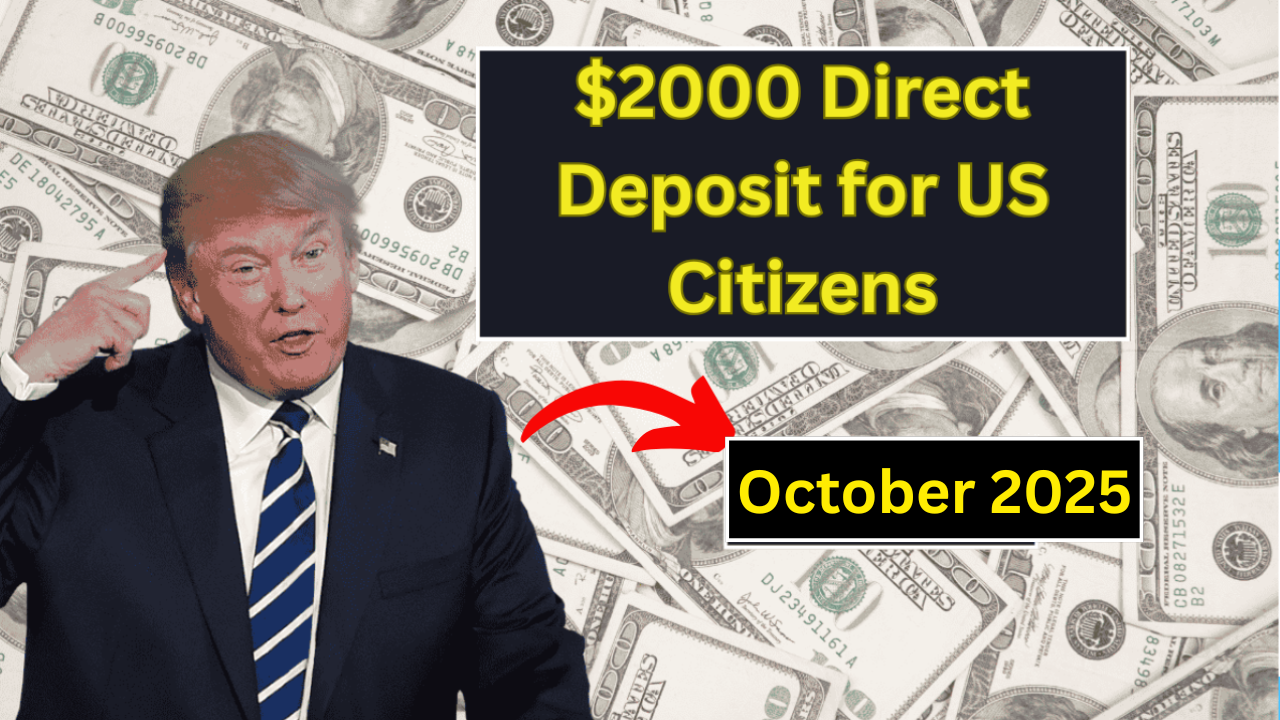$2,000 Direct Deposit :As prices continue to rise and many families are burdened with bills, groceries, and rent, Americans are closely monitoring any news of financial relief. This October, conversations have centered on a much-anticipated update: a $2,000 direct payment for eligible Americans. While it’s not a universal payment, it’s poised to provide timely assistance to millions of families.
Here’s a full breakdown of what the $2,000 payment means, who is eligible, and how it will be distributed.
What is the $2,000 Direct Deposit Program in October 2025?
The October 2025 direct deposit program is not a blanket “stimulus check” like the stimulus checks sent during the pandemic. Rather, it is a targeted relief measure combining federal aid, IRS-administered tax credits, and additional rebate programs in some states.
The $2,000 figure represents the average direct deposit payment amount for eligible recipients. Not every American will see this exact number, but for those who meet the eligibility requirements, this deposit will be a significant boost.
Why are these payments being issued?
The government has acknowledged current challenges such as high inflation, rising rents, and increased healthcare and grocery costs. October was chosen because:
- It corresponds with the new fiscal year for federal programs.
- Many IRS refunds and credit adjustments are scheduled to be issued.
- Some states have scheduled their relief checks to be issued in the fall.
All of these initiatives mean that October could be a crucial month for much-needed financial relief.
Who is eligible?
Eligibility depends on income, tax filing, and benefit status. Here’s a look at the main groups:
- Low-to-moderate-income individuals: Individuals earning below a specific income threshold (typically $75,000 or less, or $150,000 for couples) may be eligible for relief.
- Social Security, Small Business (SSI), and Small Business Development (SSD) beneficiaries: Many senior citizens and Americans with disabilities are included, and payments often come through their standard deposit channels.
- Families with children: Some families may receive additional credits, increasing their deposit amount.
State residents: Some states are offering rebates in addition to federal assistance, bringing the total payment closer to $2,000.
Payment Dates
$2,000 direct deposits are expected to be issued in batches through October 2025:
Social Security recipients: Payments will be made according to their standard benefit schedule (typically the second, third, and fourth Wednesdays of the month).
- IRS tax refunds/adjustments: Will be issued weekly on Fridays.
- State-level rebates: Dates vary by state, and most payments arrive in mid- to late October.
- Direct deposit is the fastest option. Paper checks may take longer and could even reach early November.
IRS Instructions for Claiming Payments
For most recipients, no additional action is required. However, if you believe you are eligible but haven’t received your payment, the IRS recommends the following:
- File or amend your 2024 tax return to verify eligibility.
- Use the IRS “Get My Payment” or online refund tracker tool.
- If your bank information has changed, update direct deposit details through your IRS account.
- Respond promptly to IRS letters or notices requesting verification.
If you miss the October 2025 deadline, payments may be reissued in November after eligibility is confirmed.
Why This Matters
For millions of families, $2,000 could mean paying rent, paying off credit card balances, or buying groceries without worrying about stretching their budgets too far. Senior citizens and families in particular are expected to benefit the most.
However, financial experts advise Americans to view this relief as temporary support. With no guarantee of future stimulus or relief checks, it’s wise to plan carefully – prioritizing essentials, paying down debt, and saving whenever possible.
Final Thoughts
The $2,000 direct deposit for US citizens in October 2025 is real, but it’s not a one-size-fits-all boost. It’s a targeted effort to deliver financial relief to where it’s most needed. Whether you qualify depends on your income, tax status, and, in some cases, your state of residence.
For those eligible, this direct deposit couldn’t have come at a better time. As inflation continues to weigh heavily on families, the October payments will serve as a welcome lifeline—a reminder that while challenges remain, help is on the way.

